Abandoned Iron Ore Pier


These little engines were used to push ore cars under the tipple to be loaded.
Click a picture for a larger version!


These little engines were used to push ore cars under the tipple to be loaded.
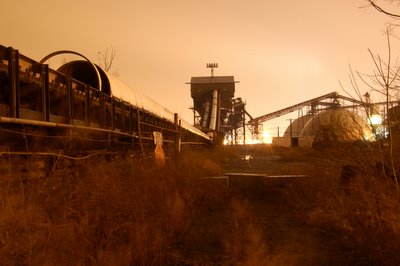
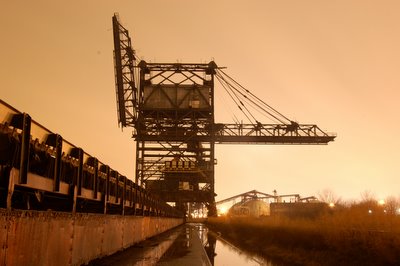


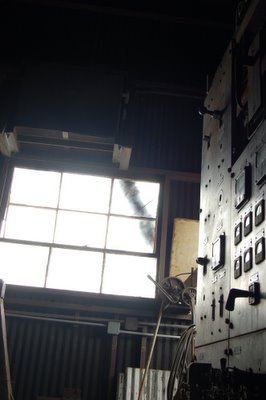
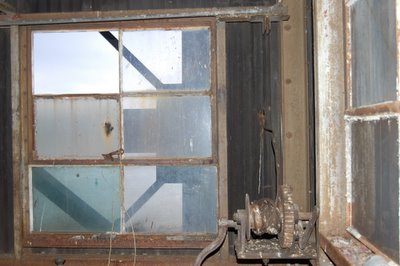

Looking out the window towards another ore unloader and the port and weed-strewn lots beyond.
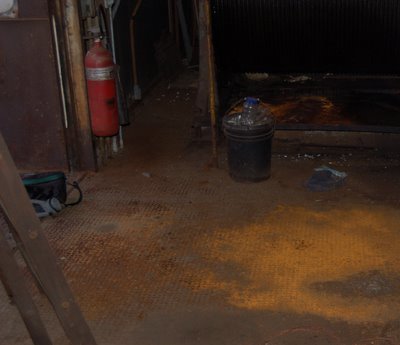
The door into the motor-house, with my camera bag lying in it.
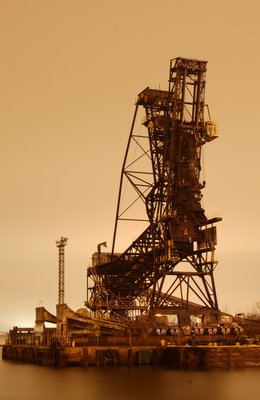
These two pictures are taken from the Ore pier, but of the Coal Pier. Here, trains of coal, from central and western Pennsylvania, and coal producing areas of West Virginia, Maryland, and Ohio nearby, were dumped into ships for export. Two ships could be loaded at a time, because of the double railroad car dumpers to the right of this photo. Decades ago, the area off the pier would've been a massive assortment of coal cars waiting for dumping, along with various support facilities, but now, it is mostly overgrown, with several buildings demolished, and the extensive railroad trackage buried in mud. Currently, the pier itself is used to anchor barges, I even saw one depart while there, but their anchorage has nothing to do with this equipment on the pier, which has been unused since the mid-80s. Its closure was partially because of the depletion of eastern US coal mines, but primarily a result of the increase in cheaper world production. I'm finding very little information about this in general, but I'll guess, China, Australia, and various South American countries have taken the business.
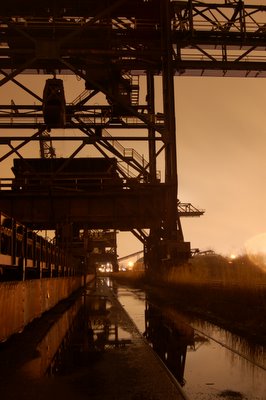
Looking down the Ore Pier. Spilled ore lies everywhere. To the left is the coveyor that took ore unloader from ships to either storage or rail reloading.
Shoes of a worker, or a visitor?
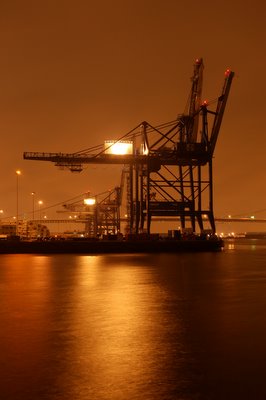
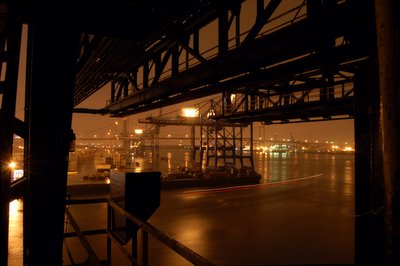
I'm standing at the convergence of two flights of stairs and some horizontal walkways that lead to various parts of the loader. Above, still, are the arms that extend out over ships to scoop and (dump?) ore.
It was extremely tricky bracing against the wind and the rain, on this walkway, to get a decent shot. Rain got on the lense for this one. This is looking the other way, towards the shore, as I'm standing one of the last two unloaders.


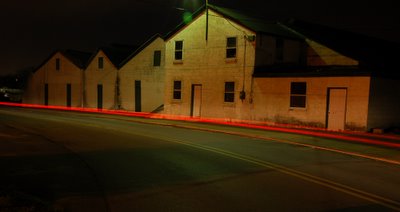
Next to it lies a little used or unused Mushroom facility. Before the swath of high income neighborhoods took over most land, mushroom farming was the cheif occupation of this area. Why the wealthy of the area have settled en masse amongst shit, I don't know.
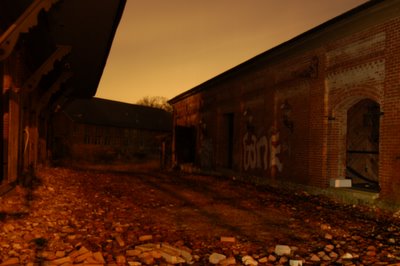
This was a 5 minute exposure, as there was no light on this scene. I should've done longer, and focused better, but shots like this don't come in quantity. I'll get it some other time.
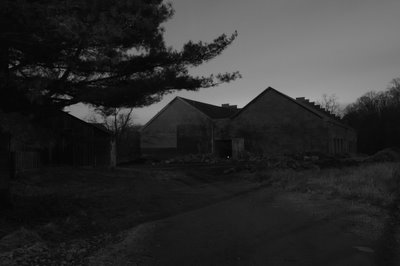
Part of the same complex, this photo has the same problems. I was trying to get two deer in the photo, they actually were standing a mere 15 feet away, next to the buildings, but I wasn't smooth enough. I'm not sure what these buildings were here for, but next to them is a moderately sized plant that used to produce plastic and rubber products.
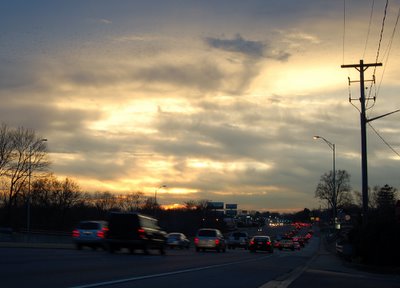
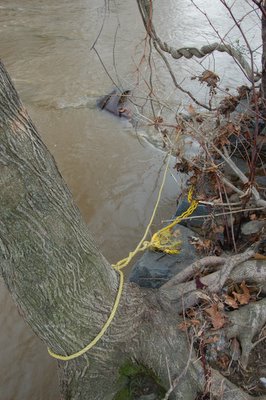
I liked how the yellow roped looked like it was holding the tree back, and then I noticed that root spiraling through the air, looking more like real rope that the cheesy, yellow nylon rope does.
 I was asked to take some pet pictures. This, the first, was the best. The cat didn't know what the camera was, and came right up for inspection. After that, it was all hiding.
I was asked to take some pet pictures. This, the first, was the best. The cat didn't know what the camera was, and came right up for inspection. After that, it was all hiding.
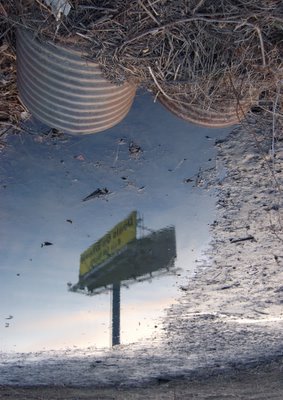
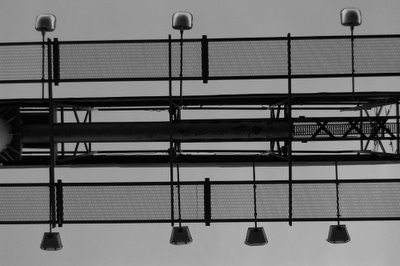

This isn't normal muck. Through the ooze, railroad ties poke out, metal plates show a corner, and bricks masquerade as muddy stone. During the height american capitolism, what here is a pool of water were teeming railroad freight yards, while behind me industries served by water, rail, and road made this a hazy, bustling area. Now, the business is renting billboards.

The Save-A-Lot that owns this cart is at least two miles away. Carts can travel far on pavement, I've even found personally, but to get this through so much dirt and muck is a feat. I suppose the person gave up here.
These had the appealing color contrast of black and a orange/golderod/yellow
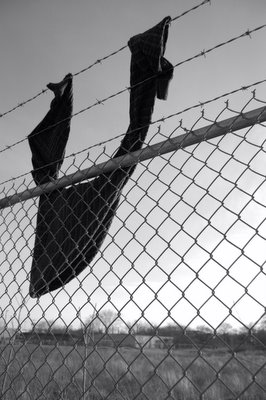

mmm.... financial buildings. Commerce used to be centered in the foreground, next to this small river connecting to a very navigable one, but now it is centered in the background, in the towers of BANK1ONE, MBNA, Bank of America, etc. These instituations, the center of our current economy, derive their revenue and profit from extracting money from the masses of this country and the world. They don't actually produce anything.
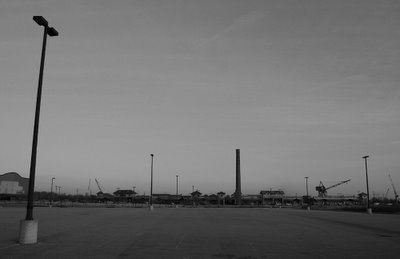
I realize now that this is a very dark photo in B & W. Oops. Theres not much to see anyway, just a large, empty paved area, some outlet stores, and carictures of the former shipbuilding and manufacturing industries that used to reside here, in the from of an isolated smokestack and some waterfront cranes.
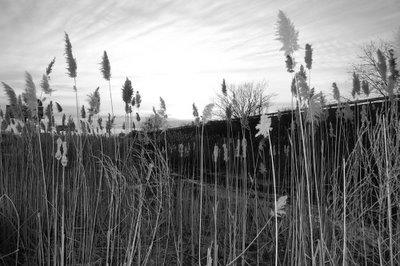
Having some beautiful marsh grasses in front of I95 and this mudflat makes it alot more attractive.
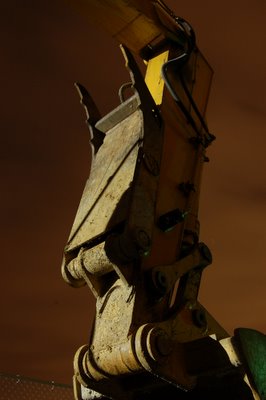
I see quite a few excavators, their outside my window every morning. I'm always drawn to watching them though, becuase their so evocative of creatures in thier movements. Its a nice, jerky, awkward, scary sort of resemblance too. So many of the metal tools suggest insects to me; this attachment reminds me of a jointed leg and its sharp tips. Really though, it just flips down, to provide a mock thumb to the bucket of the excavator, good for grabbing debris, steel, and such.
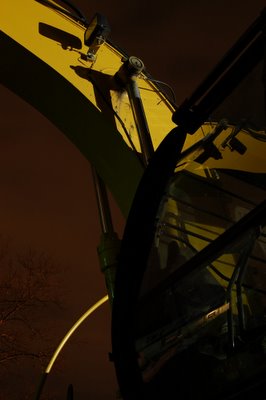
Alot of these recent photos are quite empty, just being my immediate reaction to a pretty form or interesting composition. But, I'm learning how to use this camera. For all of these shots, I have the aperture at F10, and I use a remote for the exposure length. On each new picture, all I had to touch on the camera was focus. Otherwise, I used a remote to start each exposure, and counted to what my guess was to how long it should be. Almost all of these subjects are the only photo I took, so it works pretty well.

Long exposure of the tree that's shadow was on the plain building.